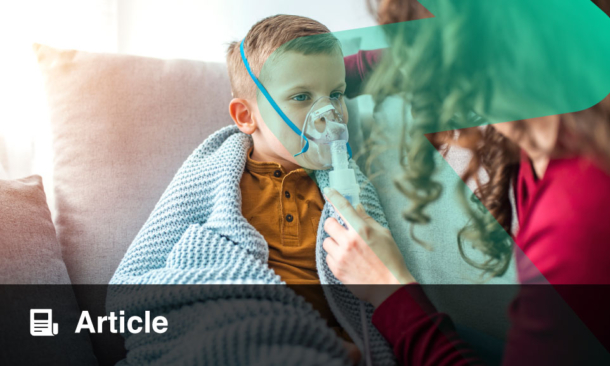Author: *Jose A. Meade-Aguilar1
1. Department of Medicine, Chobanian & Avedisian School of Medicine, Boston University, Massachusetts, USA
*Correspondence to [email protected]
Disclosure: The author has declared no conflicts of interest.
Keywords:Intravenous oxygen microbubble therapy, machine learning, mechanical
power, oxygen targets.
Citation:Respir AMJ. 2025;3[1]:27-29. https://doi.org/10.33590/respiramj/FYOV5995
![]()
MECHANICAL ventilation remains one of the most powerful, yet potentially harmful tools in critical care. Despite decades of refinement in ventilator strategies, complications such as ventilator-induced lung injury, oxygen toxicity, and fluid overload continue to impact outcomes in those who are critically ill. At the American Thoracic Society (ATS) International Conference 2025, a series of novel studies pushed the boundaries of our understanding and delivery of respiratory support. Here, three key advances that offer a glimpse into the future of mechanical ventilation are highlighted: quantifying risk with mechanical power and fluid overload, applying machine learning to personalize oxygen targets, and engineering a groundbreaking intravenous oxygenation strategy.
MECHANICAL POWER AND FLUID OVERLOAD: A DEADLY SYNERGY
A large retrospective study from Taichung Veterans General Hospital, Taiwan, analyzed 4,441 patients in the ICU who received continuous mechanical ventilation for over four days.1 Investigators assessed mechanical power (MP), a comprehensive measure of energy transferred to the lungs, and fluid accumulation index (FAI) as predictors of hospital mortality. They found that both MP and FAI were independently and additively associated with increased mortality. Those who survived had consistently lower MP and fluid accumulation across the first four ICU days. Even after adjusting for confounders, both variables remained strong predictors of poor outcomes (hazard ratio for MP: 1.03; hazard ratio for FAI 2.43; both p<0.001).
Implications
This study reinforces the importance of minimizing not only overt ventilator pressures and volumes, but also the total energy delivered to the lungs. MP integrates multiple parameters, including tidal volume, driving pressure, and respiratory rate, into a single meaningful metric that could be incorporated into bedside decision-making. Additionally, the strong association of fluid accumulation with mortality underscores the need for more proactive fluid management strategies. The findings advocate for a dual-pronged approach: mitigating mechanical stress while optimizing volume status early in the ICU stay.
PERSONALIZING OXYGEN TARGETS WITH MACHINE LEARNING: BRIDGING TRIAL DATA AND BEDSIDE CARE
Another innovative study evaluated how current ICU oxygenation practices align with individualized peripheral oxygen saturation (SpO₂) targets predicted by a machine learning model trained on previous randomized trial data.2 Among 619 mechanically ventilated patients, the model predicted that 53% would benefit from higher SpO₂ targets (96–100%) and 47% from lower targets (88–92%). However, real-world SpO₂ values remained strikingly similar across both groups (96.2% versus 95.6%; p=0.18), suggesting a mismatch between personalized optimal targets and standard care. Notably, only patients in shock exhibited differences in oxygen delivery based on predicted benefit.
Implications
These findings highlight a critical gap between evidence-based, individualized targets and clinical practice. Despite growing recognition that “one-size-fits-all” oxygenation may be suboptimal, or even harmful, most patients still receive uniform SpO₂ levels. Machine learning offers an opportunity to tailor oxygen targets in real time, accounting for unique patient phenotypes and risk profiles. Embedding such tools into ICU workflows could bring us closer to precision critical care, improving outcomes by aligning therapy with individualized needs.
INTRAVENOUS OXYGEN MICROBUBBLE THERAPY: A BOLD LEAP BEYOND THE LUNGS
In a striking departure from traditional ventilatory support, researchers introduced a new method for delivering oxygen intravenously via a saline solution infused with nano- and micro-sized oxygen bubbles.3 Generated through high-pressure oxygen saturation and custom-designed cavitation, this milky fluid was infused into an ex vivo desaturated swine blood circuit. The therapy significantly increased both SpO₂ and partial pressure of oxygen (by ~28% and ~26 mmHg, respectively), without the need for lung-based gas exchange. Bubble sizes ranged from ~60 nm (nanobubbles) to ~20 µm (microbubbles).
Implications
This proof-of-concept represents a revolutionary approach to oxygen delivery. In situations of profound hypoxemia where lung mechanics are failing, such as severe acute respiratory distress syndrome or refractory shunt physiology, intravenous oxygenation could act as a rapid bridge to recovery or definitive intervention. While still in early experimental phases, this technology could eventually supplement or even reduce the need for high-pressure ventilation in selected cases. Future research will need to address safety, optimal dosing, and potential complications such as gas embolism, but the foundational work here marks a bold new chapter in respiratory support.
CONCLUSION
The research presented at ATS 2025 reflects a pivotal shift in the landscape of mechanical ventilation. We are moving beyond static parameters and protocolized care, toward a future that is dynamic, personalized, and technologically augmented. Whether it is refining metrics like MP, personalizing oxygen delivery through AI, or bypassing the lungs entirely with intravenous microbubble therapy, the message is clear: innovation in respiratory care is accelerating, and the potential to reshape outcomes has never been greater. For clinicians, researchers, and patients alike, these advances offer not only hope, but a challenge: to rethink how we support the most vulnerable lungs in the ICU.







